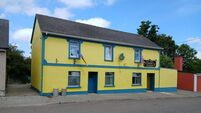Parties jostle for the right to be called numero uno
Similarly, the Labour Party strategy before general election 2011 got underway was to keep an overall majority out of the grasp of Fine Gael — or at least keep its majority small enough so it could not survive on the support of independents alone.
Unlike the PDs, Labour was never going to broadcast its desire for coalition from the ladder-tops. Because for Labour, coalition has become a dirty word.
It learned its lesson from the Mullingar Accord in 2007 that aligning itself to another party could seriously damage its vote.
But no matter how much they try to hide it, they know that the coalition is inescapable. The latest opinion polls show neither of the main opposition parties can form a Government on their own. If either wants to get into power, they will have to get into bed with the other.
It now appears that Labour at 24% is just six points behind Fine Gael’s 30% of support. And so the battleground shifts to how much weight Labour can carry in that Government and if it can stretch to somewhere near Fine Gael’s seat numbers.
In the famous Spring Tide election of 1992, Labour went into the election with an already popular leader in Dick Spring on 12%. This grew to 17% throughout the campaign and was 19% by polling day when they more than doubled their seats from 15 to 33.
With this in mind, the party is always conscious that it can exceed even its own great expectations. And with all to play for this time, it has set out on its all-out attack on Fine Gael, linking it to Fianna Fáil and distancing itself from the “Celtic Tory Consensus” of both civil war parties.
As the first official day of campaigning got underway, all parties concentrated on who was cosying up with whom.
Eamon Gilmore said that “for the first time in the 90-year history of this State, we can elect a government which is led by neither Fianna Fáil nor Fine Gael.”
Competing with Fine Gael on the one hand and fighting off Sinn Féin and left independents on the other, Mr Gilmore was anxious to make Labour stand apart.
“Fianna Fáil and Fine Gael are comfortable with each other’s policies” calling on voters to “break up the Celtic Tory consensus that has brought us to where we are,” he claimed.
But it was not long before Fianna Fáil’s leader Micheál Martin hit back by highlighting the disunity between the future coalition partners. The man who does not want any soundbytes in this election said “Ireland could not afford a tug-of-war government” in what could become one of the most memorable and effective sound bytes of the campaign.
Fianna Fáil strategies believe the party’s relative success in the election depends largely on exposing the policy differences between the potential coalition partners and they will hammer home this message, forcing Labour and Fine Gael to respond to it, at every opportunity.
After Mr Martin’s attack, it was on to Enda Kenny who was put in a position of explaining that he was neither too close to Fianna Fáil nor too far away from Labour.
Asked to outline what Fine Gael policies differed from Fianna Fáil, Mr Kenny could think of very little except “the truth”.
Pressed again, he said they both supported the Good Friday Agreement, the Lisbon Treaty and even the strategy of reducing the budget deficit. The only difference he mentioned was dealing with the banks.
Both parties agree on the target for cuts and reduction of Ireland’s deficit by 2014.
Labour, which had agreed to this deadline, has now shifted ground and with their economic plan launched today will commit to spreading the Budget adjustment over a longer time frame — to 2016.
Fine Gael are also closer to Fianna Fáil on the ratio of cuts-to-tax hikes involved in the plan and this will be one of a big negotiating point if they ever form a programme for government.
The two polls out on the first day of campaigning with conflicting results showed a volatile electorate and an air of possibility in an election where anything is possible before polling on February 25.
As campaigning got underway babies were kissed, grannies were hugged and supermarket workers were embraced across their tills.
But the real focus was on which political parties were embracing each other. Fianna Fáil said Fine Gael and Labour are hatching a post-election coalition plan for a “tug of war Government”; and Labour said it offers a break from the past” because “Fine Gael and Fianna Fáil have little policy difference between them and share everything but name.
Single party government? No chance.











